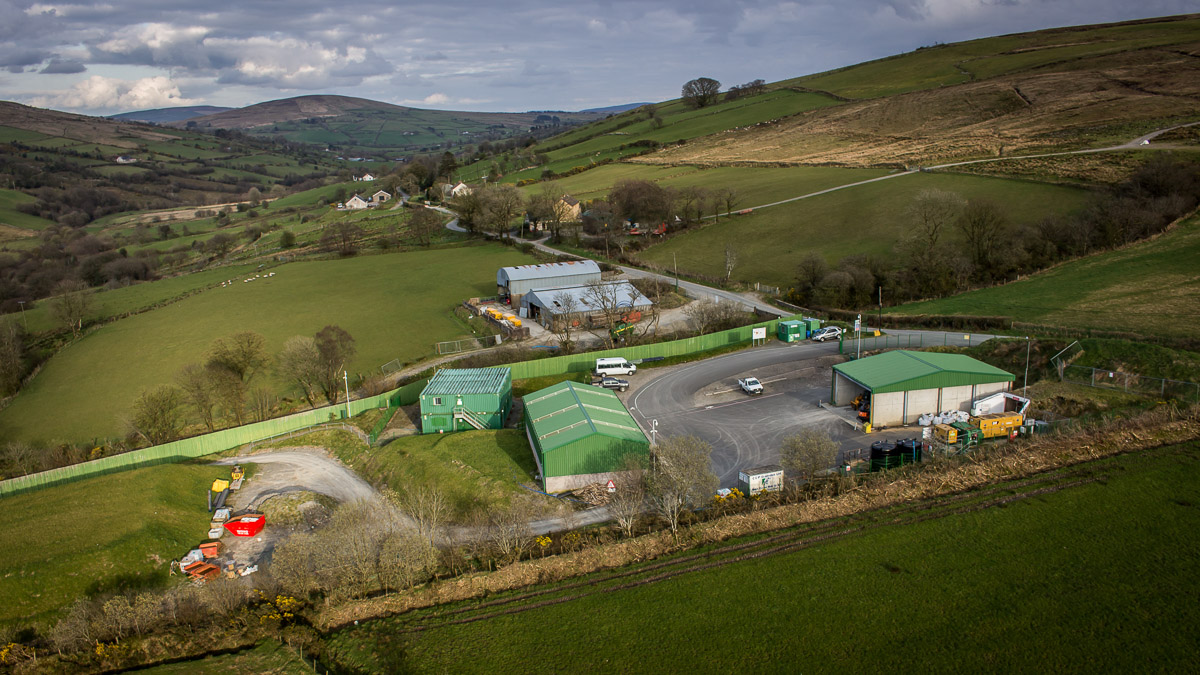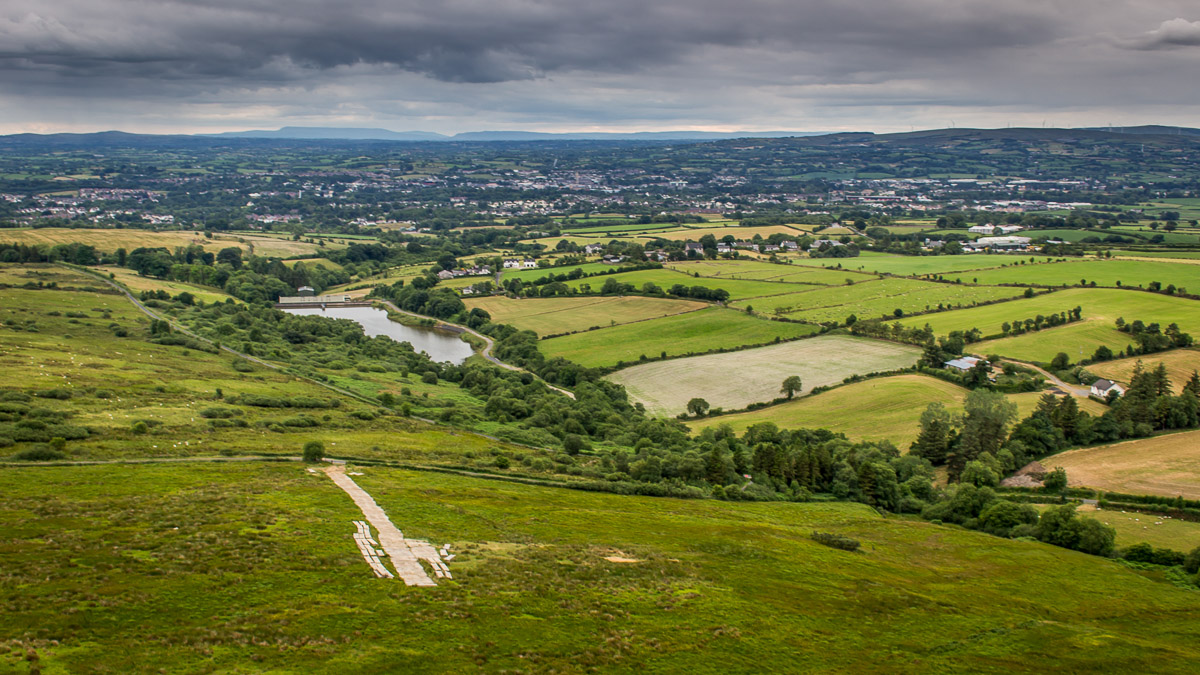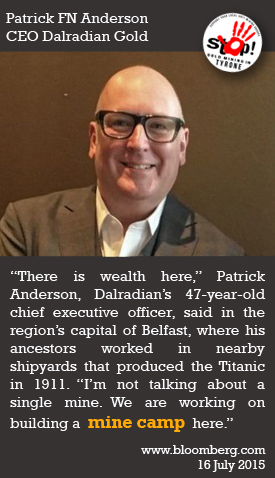What's it all about? Gold mining in the Sperrins
Dalradian acquired the project at Curraghinalt in 2009 and extended the existing adit to 1,700m, and proceeded to remove 15,000 tonnes of material as a ‘bulk sample’. This sample was shipped out to Washington State USA for processing. They also developed the compound at Curraghinalt further, by adding offices, a machinery shed, and an ore shed.
In 2017 Dalradian submitted a planning application for a mine and processing plant at Greencastle. The extent of the proposed operation was shocking for the local people, who were already concerned about the project. The site on Crockanboy hill, on the other side of the ridge from Curraghinalt was to be massive, the waste rock stockpile would be 28 hectares in area, 53m tall, and almost a kilometre long… all this only 1.2km from the local primary school on an uphill gradient! Also the initial proposals featured the use of cyanide in the processing plant, which hadn’t been mentioned by Dalradian before in the earliest discussions. Dalradian were proposing to use up to 2.1 tonnes of Sodium Cyanide per day.
The underground mine itself would be accessed via a portal on the hillside, and a spiral decline would extend downward 900m, 440m beneath sea level. From the spiral decline, a total of 28 horizontal drifts would provide access to the stopes, from which the gold ore would be extracted.
More concerning, in 2016 the CEO of Dalradian Gold, Patrirck FN Anderson stated in an interview with Bloomberg that- “I’m not talking about a single mine here, we are working on a mine camp here”. When you look at the prospecting licences for Dalradian in the Sperrins the true threat to the area becomes visible- 6 prospecting licences are currently held by Dalradian. It total this accounts for 122,260 hectares or 472 square miles of land,- most of which is inside the Sperrins AONB (Area of Outstanding Natural Beauty). This area accounts for almost 10% of the land area of Northern Ireland.
In 2019, almost 25% of the land area of Northern Ireland had prospecting licences issued, by a number of different companies.
Already Dalradian have been actively sampling and drilling around the Curraghinalt area, but they have extended outward into the other licenced areas- most notably in 2018 when it was discovered that they had drilled 7 boreholes in the Rylagh/Crosh areas near Omagh- only 180m from the feeder stream that supplies the local Glenhordial Reservoir. Understandably this created a backlash from the local people who had concerns about their water supply. This only added to the public concern that was already evident in the Greencastle area.
These concerns were highlighted further by several episodes where it was clear that tanks of drilling fluids were not covered, overspill and run-off protection was ‘minimal’, and the drill rigs were not being adequately fenced off at the end of shifts- all this from a company that intended to use 2 tonnes of cyanide per day!
Dalradian’s plans also revealed that the operation would be running 24/7, 365 days a year- with up to two blasts per day to extract the 1,700 tonnes of ore that they were targeting- again their CEO stated that the area would be ‘lit up like Belfast International Airport’ at night’.
In August 2019 Dalradian revised their 10,000 page planning application. In a bid to appease the public backlash they decided to drop the cyanide processing from their plans, but they failed to appreciate that the cyanide was only a part of the opposition. Dalradian are now opting to export a concentrated ore ‘overseas’ for smelting- much in the way that Galantas were doing at Cavanacaw, Omagh.
The problem with this model is that it merely transfers the problem to another area of the globe.
As of November 2021 a total of over 37,000 individual objection letters have been received by the planning authority- an unprecedented amount in the history of Northern Ireland, and the Island of Ireland for that matter. The number of objections are rising steadily, with 1,000s of them backlogged in the system waiting for processing.
How many will the government need to get before they realise that the proposed mine is unwanted, and will not happen?




